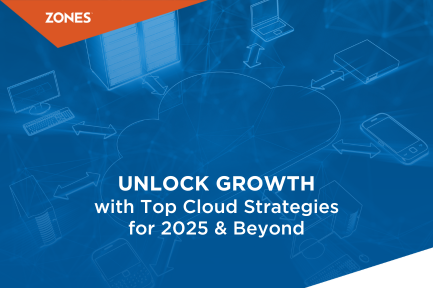Top 5 Cloud Strategies for Success in 2024 and Beyond
The future is now, and market leaders are gearing up for a digital transformation that promises growth, scale, agility, and resilience. Recognizing...

Today, cloud computing has become essential to organizations since it provides flexibility, scalability, and value for money. However, with organizations adopting more cloud services, managing regulatory compliance is the central issue. Noncompliance is not just costly; it is damaging to an organization’s image. This blog will highlight some of the problems in compliance in the cloud and some of the ways you can consider when approaching this issue for a cloud strategy.
Can you believe that as much as 41% of organizations face a slowdown in their projects based on compliance issues? Cloud adoption is not an easy process. It is accompanied by numerous regulations, which can make it confusing. Compliance is no easy task with data privacy laws such as the GDPR and industry-specific regulations such as HIPAA.
Problem: Businesses are struggling to keep up with the large number of compliance requirements in the cloud.
Agitate: Noncompliance can result in severe penalties, legal issues, and loss of customer trust.
Solution: A structured approach to cloud compliance can mitigate risks and ensure smooth cloud operations.
To achieve proper cloud adoption, an organization needs to establish fundamentals, including a strategy that will meet the company’s goals while observing the Cloud Act.
This requires a solid foundation to support the cloud solutions.
Staying compliant in the cloud needs to be thoroughly planned and executed, as it is vital. Thus, applying a good foundation can guarantee efficiency and compliance with relevant regulations.
Transitioning to the cloud and updating current applications are critical and require proper execution to meet compliance.
The foundation of successful cloud adoption lies in a well-defined strategy that aligns with your business objectives while addressing compliance requirements.
It is crucial to stress that cloud governance must be done adequately, as organizations must pay attention to their compliance and costs.
As a Cloud Service Provider (CSP), Zones is uniquely positioned to use its experience and tried-and-tested procedures to help clients navigate the cloud.
Key Advantages:
Managing regulatory compliance in the cloud is a challenging but crucial responsibility for modern enterprises. Organizations may effectively manage risks, maintain compliance, and optimize their cloud infrastructures by implementing a systematic approach and utilizing specialized services partner such as Zones. With a reliable partner, you can safeguard your cloud operations and stay ahead of regulatory developments.
Related Reading
FAQs
Q: What are the key regulations affecting cloud compliance?
A: Key regulations include GDPR, HIPAA, and industry-specific standards like PCI-DSS.
Q: How can automation help in cloud compliance?
A: Automation ensures consistent enforcement of compliance policies, reducing the risk of human error.
Q: What are the cost benefits of using a cloud advisory service?
A: Cloud advisory services can optimize cloud spend, potentially saving up to 30% on current consumption.
Q: How does Zones ensure cloud compliance for its clients?
A: Zones provides comprehensive cloud management services, including risk management, security, and compliance analysis, tailored to each client’s needs.
By proactively addressing regulatory compliance, businesses can harness the full potential of cloud computing while safeguarding their data and operations—partner with Zones to navigate the complexities of cloud compliance and achieve your digital transformation goals.

The future is now, and market leaders are gearing up for a digital transformation that promises growth, scale, agility, and resilience. Recognizing...

Cloud adoption is on the rise, and businesses must adopt FinOps as a strategic approach to manage cloud costs effectively. With FinOps,...

As the digital landscape evolves, cloud computing remains one of the most transformative forces reshaping businesses' operations. With the global...